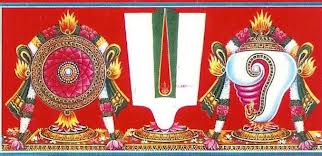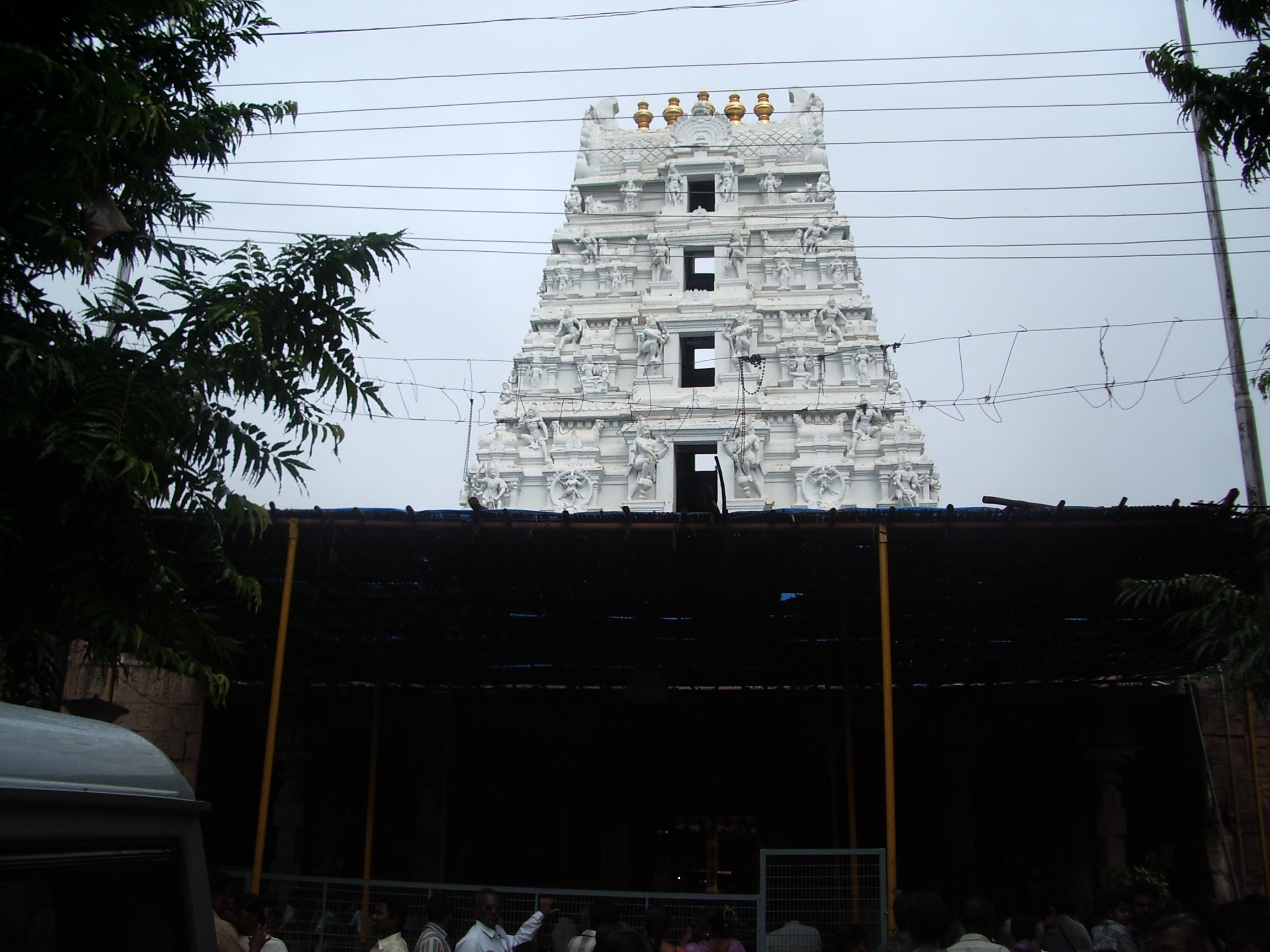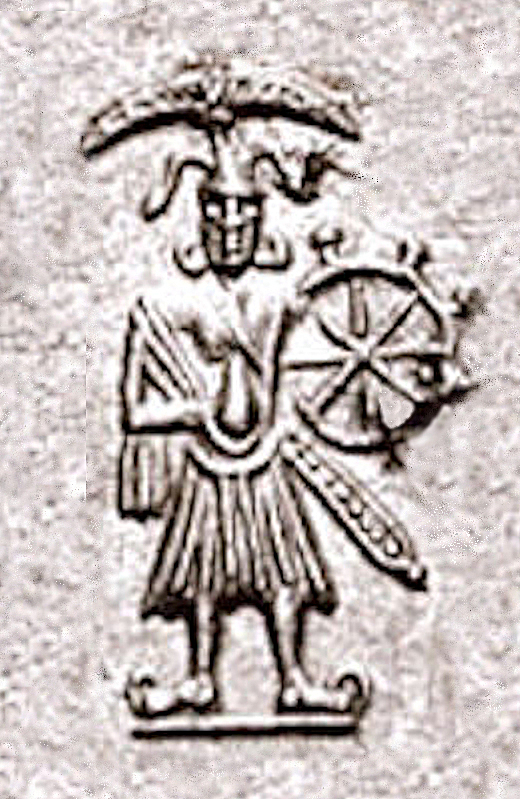|
Andhra Vaishnavas
Andhra Vaishnavas is a Brahmin community in the Indian states of Andhra Pradesh and Telangana who follow Ramanuja Vishishtadvaita Vedanta Darshana and profess Sri Vaishnavism. History Andhra Vaishnavas were formerly Smarta brahmins who converted under the influence of Ramanujacharya and later Sri Vaishnava '' acharyas''. Sri Vaishnavas generally speak Tamil, however, Andhra Vaishnavas are Telugu-speaking. Orthodox Sri Vaishnavas are exclusive and hold that they co-existed as a separate caste of Brahmins with the Smarthas. They seceded from Smarthas only after Ramanuja's teachings. Their ranks were swollen by frequent additions from others. Andhra Vaishnavas form a single distinct sect and are not divided into the Vadakalai and Tenkalai denominations, unlike the Tamil Iyengars coreligionists. Their practices are similar to Tenkalai denomination as they follow Tenkalai Sri Vaishnava ''mutts'' of Tirukoilur Emperumanar Jiyar ''mutt'', Yathiraja Jiyar ''mutt'' and Tirupati Ram ... [...More Info...] [...Related Items...] OR: [Wikipedia] [Google] [Baidu] |
Sri Vaishnavism
Sri Vaishnavism () is a denomination within the Vaishnavism tradition of Hinduism, predominantly practiced in South India. The name refers to goddess Lakshmi (also known as Sri), as well as a prefix that means "sacred, revered", and the god Vishnu, who are together revered in this tradition. The tradition traces its roots to the ancient Vedas and Pancharatra texts, popularised by the Alvars and their canon, the Naalayira Divya Prabandham. The founding of Sri Vaishnavism is traditionally attributed to Nathamuni of the 10th century CE; its central philosopher has been Ramanuja of the 11th century, who developed the ''Vishishtadvaita'' ("qualified non-dualism") Vedanta sub-school of Hindu philosophy. The tradition split into two denominations around the 16th century. The Vadakalai sect vested the Vedas with the greatest authority and follow the doctrine of Vedanta Desika, whereas the Tenkalai sect vested the Naalayira Divya Prabandham with the greatest authority and follow the pri ... [...More Info...] [...Related Items...] OR: [Wikipedia] [Google] [Baidu] |
Brahmin
Brahmin (; ) is a ''Varna (Hinduism), varna'' (theoretical social classes) within Hindu society. The other three varnas are the ''Kshatriya'' (rulers and warriors), ''Vaishya'' (traders, merchants, and farmers), and ''Shudra'' (labourers). The traditional occupation of Brahmins is that of priesthood (purohit, pandit, or pujari) at Hindu temples or at socio-religious ceremonies, and the performing of rite of passage rituals, such as solemnising a wedding with hymns and prayers.James Lochtefeld (2002), Brahmin, The Illustrated Encyclopedia of Hinduism, Vol. 1: A–M, Rosen Publishing, , page 125 Traditionally, Brahmins are accorded the supreme ritual status of the four social classes, and they also served as spiritual teachers (guru or acharya). In practice, Indian texts suggest that some Brahmins historically also became agriculturalists, warriors, traders, and had also held other occupations in the Indian subcontinent.GS Ghurye (1969), Caste and Race in India, Popular Prakasha ... [...More Info...] [...Related Items...] OR: [Wikipedia] [Google] [Baidu] |
Tirukoilur
Tirukoilur also spelt as ''Tirukkoyilur'' or ''Tirukovilur'' is a city and the headquarters of Tirukoilur taluk in Kallakurichi District, Tamil Nadu, India. The town is located on the southern bank of Thenpennai River and famous for the Ulagalantha Perumal Temple, the Veerateeswarar Temple and the Kabilar Kundru. Tirukoilur is located on the highway connecting cities of Tiruvannamalai and Vellore with Southern Tamil Nadu. The town is served by Tirukoilur railway station (formerly, Arakandanallur Thirukovilur railway station). Vanavan Mahadevi, the mother of Rajaraja Chola I, was born as a Tamil princess of Chera dynasty in Tirukoilur. Demographics India census, Tirukoilur had a population of 60212. Males constitute 49% of the population and females 51%. Tirukoilur has an average literacy rate of 78%, higher than the national average of 59.5%: male literacy is 83%, and female literacy is 73%. In Tirukoilur, 10% of the population is under 6 years of age. Transport Tiruk ... [...More Info...] [...Related Items...] OR: [Wikipedia] [Google] [Baidu] |
Kirtan
Sikh ''kirta''n with Indian harmoniums and '' Kenya.html" ;"title="tabla'' drums (a common and popular pairing), in Kenya">tabla'' drums (a common and popular pairing), in Kenya (1960s) ''Kirtana'' (; ), also rendered as ''Kiirtan'', ''Kirtan'' or ''Keertan'', is a Sanskrit word that means "narrating, Bhajan, reciting, telling, describing" of an idea or story, specifically in Indian religions. It also refers to a genre of religious performance arts, connoting a musical form of narration, shared recitation, or devotional singing, particularly of spiritual or religious ideas, native to the Indian subcontinent. A person performing kirtan is known as a ''kirtankara'' (or ''kirtankar,'' कीर्तनकार). With roots in the Vedic ''anukirtana'' tradition, a kirtan is a call-and-response or antiphonal style song or chant, set to music, wherein multiple singers recite the names of a deity, describe a legend, express loving devotion to a deity, or discuss spiritual idea ... [...More Info...] [...Related Items...] OR: [Wikipedia] [Google] [Baidu] |
Smarta
The ''Smarta'' tradition (, ) is a movement in Hinduism that developed and expanded with the Puranas genre of literature. It reflects a synthesis of four philosophical strands, namely Uttara Mīmāṃsā, Advaita Vedanta, Advaita, Yoga (philosophy), Yoga, and theism. The Smarta tradition rejects theistic sectarianism, and is notable for the domestic worship of five shrines with five deities, all treated as equal – Ganesha, Shiva, Shakti, Vishnu and Surya. The Smarta tradition contrasted with the older Śrauta, Shrauta tradition, which was based on elaborate rituals and rites. There has been a considerable overlap in the ideas and practices of the Smarta tradition with other significant historic movements within Hinduism, namely Shaivism, Brahmanism, Vaishnavism, and Shaktism.Sanderson, Alexis. "The Saiva Age: The Rise And Dominance Of Saivism During The Early Medieval Period". In ''Genesis And Development of Tantrism'', Edited By Shingo Einoo. Tokyo: Institute Of Oriental Cul ... [...More Info...] [...Related Items...] OR: [Wikipedia] [Google] [Baidu] |
Annamacharya
Tallapaka Annamacharya () (09 May 1408 – 23 February 1503), also popularly known as Annamayya, was a Telugu musician, composer, and a Hindu saint. He is the earliest known Indian musician to compose songs called '' samkirtanas.'' His devotional samkirtanas were in the praise of Venkateswara, a form of Vishnu. Annamayya is said to have composed as many as 32,000 samkirtanas (songs) in the praise of Venkateswara of which only about 12,000 are available today. He wrote the highest number of Kirtanas of all time in the praise of Lord Vishnu The musical form of the kirtana songs that he composed, which are still popular among Carnatic music concert artists, have strongly influenced the structure of Carnatic music compositions. Jackson (1999), p. 216. His compositions are classified as Adhyatma (spiritual) and Sringara (romantic). Annamacharya is remembered for his saintly life, as one of the greatest musicians and is honoured as a great devotee of Vishnu by devotees and saintly ... [...More Info...] [...Related Items...] OR: [Wikipedia] [Google] [Baidu] |
Coastal Andhra
Coastal Andhra, also known as Kosta Andhra (International Alphabet of Sanskrit Transliteration, IAST: Kōstā Āndhra), is a geographic region in the Indian state of Andhra Pradesh, comprising the coastal districts of the state between the Eastern Ghats and the Bay of Bengal, from the northern border with Odisha, Orissa to Rayalaseema in the south. It includes major cities such as Visakhapatnam and Vijayawada as well as the state capital Amaravati and is recognized for its fertile lands, rich cultural heritage, and economic importance. Coastal Andhra plays a significant role in the state's agricultural output, particularly in rice and tobacco production, supported by abundant water resources from the Godavari River, Godavari, Krishna River, Krishna, and Penna River, Penna rivers. While Coastal Andhra generally includes the districts along the Bay of Bengal, the North Andhra, Uttarandhra (Northern Andhra) area is sometimes regarded as distinct due to its unique cultural and histo ... [...More Info...] [...Related Items...] OR: [Wikipedia] [Google] [Baidu] |
Reddi Kingdom
The Reddi Kingdom or Kondavidu Reddi Kingdom existed from 1325 to 1448 CE in South India, southern India. Most of the region that was ruled by the kingdom is now part of modern-day central Andhra and Rayalaseema. It was established by Prolaya Vema Reddi in 1325. Etymology The Telugu term "''Reddi''", whose earlier forms were "''Raddi''", "''Rattodi''", and "''Rattakudi''", linked to the Sanskrit term "''Rashtrakuta''", was used for village headmen, who were responsible for organising the cultivation of the agricultural lands of the villages and collecting taxes. From the seventh century, some of the members of the Rattakudi families had important posts in the administration of the kingdoms. A copperplate record mentioned the grandfather of the founder of the dynasty as a ''sainya-nayaka'', a commander of the forces. Origin The Reddi rulers played a prominent part in post-Kakatiya dynasty, Kakatiyas. The Kakatiya empire came to an end in 1323 after the army of the Delhi sultan ... [...More Info...] [...Related Items...] OR: [Wikipedia] [Google] [Baidu] |
Vijayanagara
Vijayanagara () is a city located in Vijayanagara district of Karnataka state in India.Vijayanagara Encyclopaedia Britannica Vijayanagara was the capital city of the historic Vijayanagara Empire. Located on the banks of the Tungabhadra River, it spread over a large area and included sites in the Vijayanagara district, the Ballari district, and others around these districts. A part of Vijayanagara ruins known as the Group of Monuments at Hampi has been designated as a UNESCO World Heritage Site. Hampi, an ancient human settlement mentioned in Hindu texts, houses pre-Vijayanagara temples and monuments. In the early 14th century, the dominant Kakatiya Dynasty, Kakatiyas, Yadavas of Devagiri, Seuna Yadavas, Hoysala Empire, Hoysalas, and the short-lived Kampili kingdom, who inhabite ... [...More Info...] [...Related Items...] OR: [Wikipedia] [Google] [Baidu] |
Parasara Bhattar
Parasara Bhattar (), also called Periya Bhattar and Parashara Bhattarya, was a follower of Ramanuja, a 12th-century Sri Vaishnava teacher (1062-1174 CE). He was the son of Koorathalvar. His works include the ''Srirangarajastavam''. He wrote a commentary in Sanskrit on Vishnu Sahasranamam from a Sri Vaishnava viewpoint, titled Bhagavadguna Dharpanam, in contrast to the Advaita view of Adi Shankara. According to the Tenkalai tradition (''Guru-parampara''), Ramanuja's cousin, Embar, succeeded him as the leader of Sri Vaishnavas, followed by Parasara Bhattar. Parasara defeated an Advaita Vedanta philosopher named Madhava in a debate. He accepted Madhava as a disciple, gave him the name Nanjiyar, and appointed him as his successor. Legend Birth According to Sri Vaishnava tradition, once, Koorathalvar went to bed without dinner because he had not obtained any alms that night due to rain, nor was there any food in his house. When his wife, Andal, heard the wind instrument '' ... [...More Info...] [...Related Items...] OR: [Wikipedia] [Google] [Baidu] |
Vedanta Desika
Vedanta Desika (1268–1369), also rendered Vedanta Desikan, Swami Vedanta Desika, and Thoopul Nigamantha Desikan, was an Indian polymath who wrote philosophical as well as religious and poetical works in several languages, including Sanskrit, Manipravaḷam (a Sanskritised form of literary Tamil), Tamil and Prakrit. He was an Indian philosopher, Sri Vaishnava guru, and one of the most brilliant stalwarts of Sri Vaishnavism in the post-Ramanuja period. He was a Hindu devotee, poet, Master of Acharyas (''desikan'') and a logician and mathematician. He was the disciple of Kidambi Appullar, also known as Athreya Ramanujachariar, who himself was of a master-disciple lineage that began with Ramanuja. Vedanta Desika is considered to be avatar (incarnation) of the divine bell of Venkateshvara of Tirumala by the Vadakalai sect of Sri Vaishnavism. Vedanta Desika belongs to Vishvamitra/Kaushika gotra. On the occasion of 750th anniversary of the life of Vedanta Desika, the Indian p ... [...More Info...] [...Related Items...] OR: [Wikipedia] [Google] [Baidu] |
Vaishnavism
Vaishnavism () ), also called Vishnuism, is one of the major Hindu denominations, Hindu traditions, that considers Vishnu as the sole Para Brahman, supreme being leading all other Hindu deities, that is, ''Mahavishnu''. It is one of the major Hindu denominations along with Shaivism, Shaktism, and Smartism. Its followers are called Vaishnavites or ''Vaishnava''s (), and it includes sub-sects like Krishnaism and Ramanandi Sampradaya, Ramaism, which consider Krishna and Rama as the supreme beings respectively. According to a 2020 estimate by The World Religion Database (WRD), hosted at Boston University’s Institute on Culture, Religion and World Affairs (CURA), Vaishnavism is the largest Hindu sect, constituting about 399 million Hindus. The ancient emergence of Vaishnavism is unclear, and broadly hypothesized as a History of Hinduism, fusion of various regional non-Vedic religions with worship of Vishnu. It is considered a merger of several popular non-Vedic theistic traditio ... [...More Info...] [...Related Items...] OR: [Wikipedia] [Google] [Baidu] |






